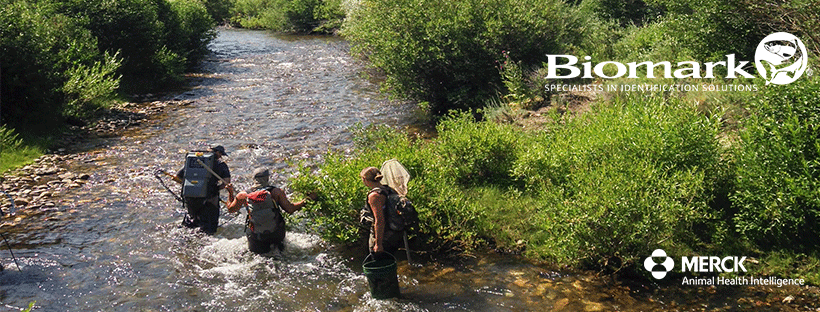Biomark Applies Novel Methodology to Endangered Salmon Populations in the Pacific Northwest
by elsa.macdonald@merck.com | Jun 23, 2021 | Biological Services, New from Biomark | Comments

Biomark Applies Novel Methodology to Endangered Salmon Populations in the Pacific Northwest
Research Study Demonstrates Robust, Efficient Approach for Salmonid Conservation
NEWS RELEASE
FOR IMMEDIATE RELEASE
Media Contacts:
Elsa MacDonald
+1 (208) 985-4452 | Elsa.macdonald@merck.com
Jeanette Lewis
+1 (973) 937-5508 | Jeanette.lewis@merck.com
BOISE, Idaho, March 9, 2020 – Biomark today announced the publication of a research study designed to estimate the carrying capacity for juvenile salmon using quantile random forest models, which demonstrate the viability of guiding habitat restoration efforts that could de-list salmon from the endangered species list.
The research study, entitled “Estimating Carrying Capacity for Juvenile Salmon using Quantile Random Forest Models,” [manuscript number ECS20-0483.R1] was published in Ecosphere, a journal of ecological science and interdisciplinary studies relating to ecology.
Endangered salmon populations in the Pacific Northwest are facing the loss or degradation of their stream habitat throughout the interior Columbia Basin. Recent published studies have suggested that their recovery may be constrained by a lack of capacity or a lack of high-quality habitat. However, understanding what habitat characteristics define high-quality habitat is confounded by large, convoluted datasets with non-linear relationships, correlated variables and outliers.
“In our research study, a quantile random forest (QRF) model was developed using fish and habitat data from seven watersheds in the Columbia River Basin to estimate life-stage specific habitat-based carrying capacity. This new approach leveraged nearly a decade of detailed habitat data from the Columbia Habitat and Monitoring Program (CHaMP) to determine habitat characteristics that best explain salmon abundance and density, which is used to predict contemporary capacity at those sites and extrapolated throughout the basin,” said primary author Kevin See, Senior Biometrician, Biomark.
While stream habitat rehabilitation actions are taking place in many watersheds within the Columbia River Basin, the potential improvements to carrying capacity for an individual action may not be reflected in observed fish abundances for many years. This research study demonstrates one way to infer the effect restorative actions have in near real time by focusing on how habitat restoration translates directly to fish capacity. Historically, the response to capacity changes by fish populations may take years or even decades to manifest, making the evaluation of those actions difficult.
As more ecological datasets become available, and the ability to sample large areas of habitat becomes more feasible (e.g., aerial imagery, LiDAR), the QRF framework demonstrated in this study provides a robust structure for using a capacity-based approach to prioritization, implementation and evaluation of habitat rehabilitation actions.
View the Full Publicaiton Here
About Biomark
Biomark is a worldwide supplier of electronic identification and related monitoring systems to the fish and wildlife conservation communities and aquaculture industry. Biomark is an Aquaculture portfolio of digital products within Merck Animal Health.
Biomark specializes in low frequency RFID (radio-frequency identification) tags also referred to as Passive Integrated Transponder (PIT) tags and related monitoring equipment and services. They integrate these products by focusing on in-house design and manufacturing and providing installation services and maintenance. The monitoring systems collect identification data at specific and strategic locations to provide researchers valuable animal intelligence for management decisions. Biomark also provides specialized services including fish tagging, statistical analysis, software development, study execution, report writing and computational model development to support statistically robust solutions.
Founded in 1990, Biomark continues their specific focus on animal identification and monitoring that enables them to lead the way in product development, innovation and data solutions, positively impacting conservation, restoration and smart management.
Through its commitment to The Science of Healthier Animals®, Merck Animal Health offers veterinarians, farmers, pet owners and governments one of the widest ranges of veterinary pharmaceuticals, vaccines and health management solutions and services as well as an extensive suite of digitally connected identification, traceability and monitoring products. Merck Animal Health is dedicated to preserving and improving the health, well-being and performance of animals and the people who care for them.
For more information, visit www.biomark.com and connect with us on LinkedIn, Twitter, Youtube, Instagram, and Facebook.
Submit a Comment
Your email address will not be published. Required fields are marked *
“*” indicates required fields

